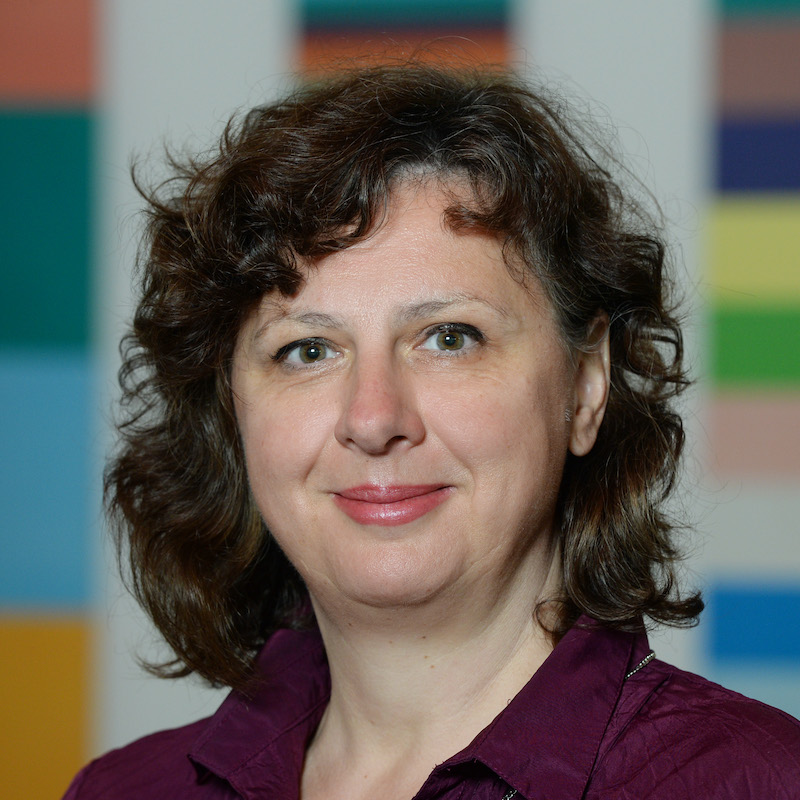
Zsuzsanna Izsvák
Group leader at Max Delbrück Center of Molecular Medicine, Berlin
Zsuzsanna Izsvák received her PhD in 1993 from the Hungarian Academy of Sciences in Budapest, Hungary. After a postdoctoral period at the University of Minnesota, St. Paul, USA, she returned to Europe. She held a long–term fellowship from EMBO and worked at the Netherlands Cancer Institute in Amsterdam between 1997 and 1999. She joined the Max–Delbrück–Center for Molecular Medicine in Berlin in 1999. In 2004, her research was evaluated by the European Science Foundation (ESF) as “strategically important” for Europe and was awarded by the European Young Investigator Award (EURYI) in 2004. Supported by the external EURYI grant, she has established her own research group, “Mobile DNA“, at the Max–Delbrück–Center in Berlin. Between 2009–2011 she was a guest professor at the Medical University in Hungary. In 2011 she was entitled to the title of D.Sc of the Hungarian Academy of Sciences. From 2011 she has a permanent group leader position at the Max–Delbrück–Center in Berlin. In 2012, her proposal has been selected for funding by the European Research Council (ERC Advanced). From 2016 she is a co–PI on a second ERC Advanced grant, EvoGenMed. Zsuzsanna Izsvák is the inventor of the Sleeping Beauty transposon–based non–viral vector system. Her goal is to integrate basic knowledge and its translation to establish a technology platform, including stem cell research, gene and cell therapy, transgenesis, cancer research and functional genomics. Her team provides an effective bridge between basic research and clinical– as well as technological translation of a novel gene transfer and stem cell technologies. In order to fill the gap between vector development and clinical trials, her team is actively participating in promoting clinical translation of the hyperactive Sleeping Beauty system (SB100X/pT4) system with the mission of establishing both efficacy and safety protocols for future gene and cell therapy applications. Her strategy is to try the Sleeping Beauty system in disease models that were already on clinical trials using alternative approaches, (1) but safety was an issue, (2) feasibility was/is an issue; (3) efficacy was a limiting factor; (4) combine the transposon–based integration vectors with viral delivery strategies for stable in vivo transduction of primitive hematopoietic stem cells; (5) include models where the transposon–based technology has a potential in regenerative medicine. The SB100X hyperactive transposon system yields unprecedented stable gene transfer efficiencies following non–viral gene delivery into therapeutically relevant primary cell types, including stem cells, and thus may facilitate the clinical implementation of ex vivo and in vivo gene therapies. The SB100X transposon has a favourable safety profile as compared to widely used retro/lentiviral approaches and provides long–term expression in various in various cell types, including primary and stem cells of therapeutic potential. As an important issue regarding the implementation of clinical trials, transposon vectors can be maintained and propagated as plasmid DNA, making them simple and inexpensive to manufacture. Alternatively, SB can be used as a hybrid vector, harnessing the effectiveness of viral delivery.
Thu. February 23 | 2.30pm – Sleeping Beauty Transposon Vectors for Therapeutic Applications
- The optimized SB100X/pT4 system enables high-level stable gene transfer and sustained transgene expression in multiple therapeutically relevant cell types
- Sleeping Beauty based non-viral and hybrid viral vectors for ex vivo and in vivo applications
- Challenges of using the vector system in various therapeutic applications, efficacy, feasibility and safety
